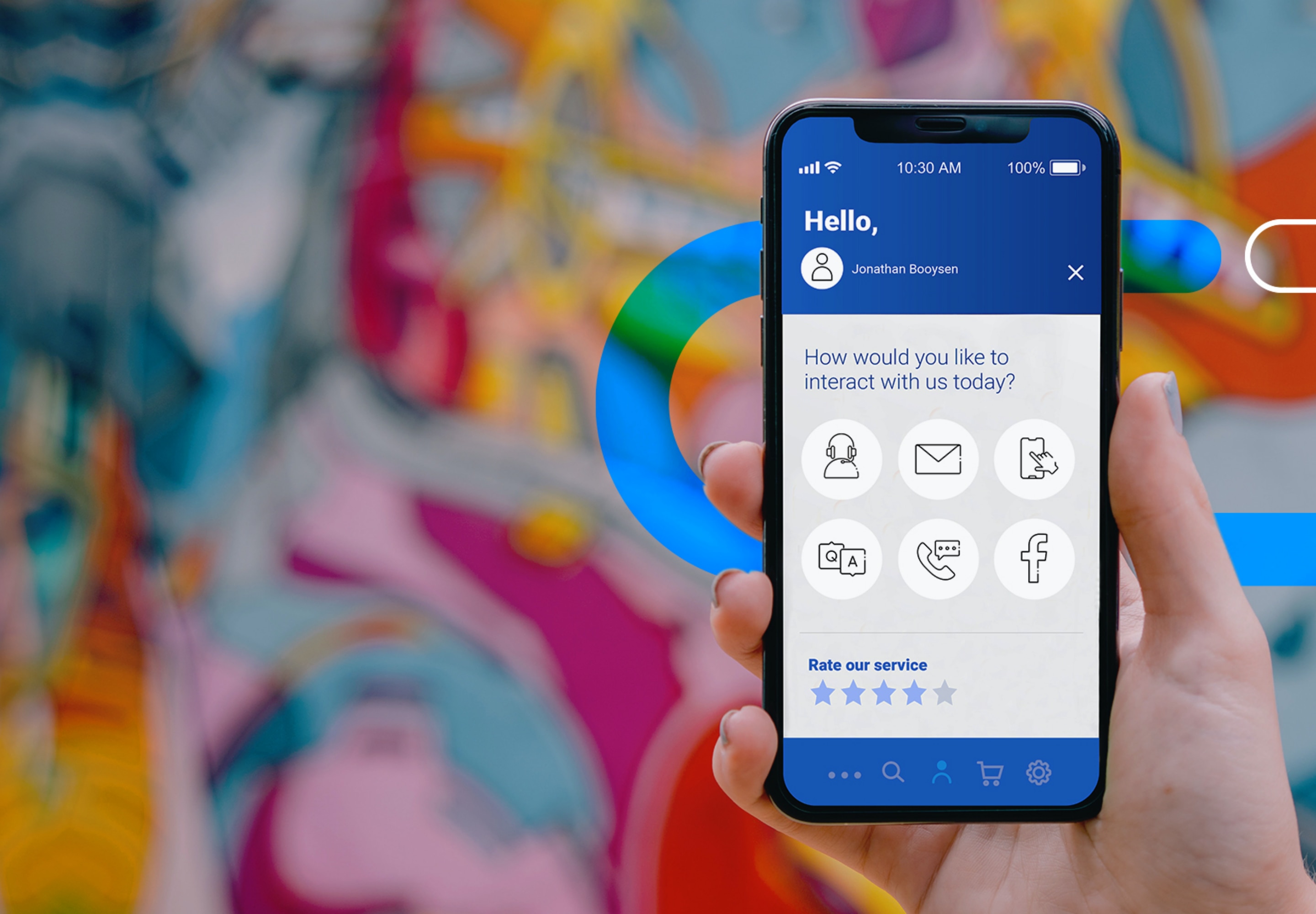-
Featured services
Harness innovation to deliver value
Ensure short-term stability as you design a roadmap for new use cases in your industry with emerging technologies.
Explore Connected Industries -
Services
View all services and productsLeverage our capabilities to accelerate your business transformation.
-
Services
Network as a Service
Popular Products
-
Private 5G
Our turnkey private 5G network enables custom-built solutions that are designed around unique use cases and strategies, and deployed, run and optimized through a full network-as-a-service model.
-
Managed Campus Networks
Our Managed Campus Networks services transform campus networks, corporate area networks and interconnected local area networks, and connect smart places and industries.
-
-
Services
Cloud Services
Popular Products
-
Cloud Migration and Transformation Services
Access the people, processes and technologies you need to deliver cloud migration projects that improve your return on investments.
-
Site Reliability Engineering Services
Get the most from your cloud investments when you harness our Site Reliability Engineering Services to support app development and lifecycle management.
-
-
Services
Edge as a Service
Client stories
-
Penske Entertainment and the NTT INDYCAR SERIES
Together with Penske Entertainment, we’re delivering digital innovations for their businesses – including INDYCAR, the sanctioning body of the NTT INDYCAR SERIES – and venues such as the iconic Indianapolis Motor Speedway, home to the Indianapolis 500.
-
Using private wireless networks to power IoT environments with Schneider Electric
Our combined capabilities enable a secure, end-to-end digital on-premises platform that supports different industries with the benefits of private 5G.
-
-
Services
Technology Solutions
Client stories
-
Services
Global Data Centers
-
Services
Digital Collaboration and CX

IDC MarketScape: Worldwide Datacenter Services 2023 Vendor Assessment
We provide a new kind of intelligent infrastructure to deliver better outcomes through technology.
Get the IDC MarketScape -
-
-
Insights
Recent Insights
-
The Future of Networking in 2025 and Beyond
-
Using the cloud to cut costs needs the right approach
When organizations focus on transformation, a move to the cloud can deliver cost savings – but they often need expert advice to help them along their journey
-
Make zero trust security work for your organization
Make zero trust security work for your organization across hybrid work environments.
-
-

Copilot for Microsoft 365
Everyone can work smarter with a powerful AI tool for everyday work.
Explore Copilot today -
-
Global Employee Experience Trends Report
Excel in EX with research based on interviews with over 1,400 decision-makers across the globe.
Get the EX report -
Discover how we accelerate your business transformation
-
About us
CLIENT STORIES
-
Liantis
Over time, Liantis – an established HR company in Belgium – had built up data islands and isolated solutions as part of their legacy system.
-
Randstad
We ensured that Randstad’s migration to Genesys Cloud CX had no impact on availability, ensuring an exceptional user experience for clients and talent.
-
-
CLIENT STORIES
-
Liantis
Over time, Liantis – an established HR company in Belgium – had built up data islands and isolated solutions as part of their legacy system.
-
Randstad
We ensured that Randstad’s migration to Genesys Cloud CX had no impact on availability, ensuring an exceptional user experience for clients and talent.
-
-
CLIENT STORIES
-
Liantis
Over time, Liantis – an established HR company in Belgium – had built up data islands and isolated solutions as part of their legacy system.
-
Randstad
We ensured that Randstad’s migration to Genesys Cloud CX had no impact on availability, ensuring an exceptional user experience for clients and talent.
-

NTT DATA and HEINEKEN
HEINEKEN revolutionizes employee experience and collaboration with a hybrid workplace model.
Read the HEINEKEN story -
- Careers
While the impact of the COVID-19 pandemic will be felt for years, how organizations responded to the challenges of the last 18 months has set a new benchmark for customer experience.
Consumers have set their own standards and they expect organizations to live up to these. There’s no going back to the way things were before and customer journeys need to be designed with this front of mind.
For the first time this year, we included a Voice of the Customer (VoC) component to our Global CX Benchmarking Report, giving us direct insight into the lived experience of customers
The top three things that organizations did well during the pandemic was to improve online functionality, respond faster and provide round-the-clock availability and this is the foundation that now needs to be built on. Organizations should remember that this was a giant leap forward in CX and these gains need to be consolidated now. This means that they should be aiming to meet these expectations rather than overwhelm customers in an attempt to exceed them.
This means getting the simple things right, including:
- Treat customers as people, not reference numbers
- Ensure they don’t have to repeat information when they contact you
- Provide channels that work for them
Many organizations will know that making CX easy and effortless remains a challenge, but customers surveyed as part of the Report indicated that leading organizations are 31.4% easier to do business with. It is possible and those organizations that get it right are seeing the benefits.
Make it easy
Ease of contact is one of the top three factors entrench customer loyalty and should be a primary consideration in contact-channel design. This sounds obvious, but our findings indicate there’s still not enough thought and strategy going into customer contact management.
Getting this right isn’t just about creating as many channels as possible. Flooding customers with too many channel options can create anxiety. What’s more important is delivering the right channels, reducing the amount of effort required on the part of the customer and integrating channels. Having to repeat the same information causes frustration. Customers want to tell their story once and then have the issue resolved, irrespective of the starting and ending points of that journey.
Get the channel right
While simply creating multiple channels for customers is counter-productive, customers still want a choice in how they engage with organizations. Rather than forcing them to use a particular channel, give them options and let them decide. With the ever-expanding options available using, for example, voice bots to bring in digital capability as an option within the voice channel, offering the option of using a self-service site or a virtual assistant, or allowing them to simply wait to speak to an agent puts them back in control of the interaction. Constantly monitoring and optimizing these journeys using big data capabilities and unstructured data analytics are critical to understanding how the options you’ve created are being used.
However, organizations that choose a purely technological route do so at their peril. They should never forget that they are dealing with humans, and making customers and employees part of the process of creating and optimizing customer journeys is critical.
Take an inclusive approach
The Report found that organizations appreciate the need for continual optimization of customer journeys. 93.8% appreciate the need for CX design principles and guidelines that incorporate regular process and optimization review, but there’s still a significant lag in making this an inclusive process.
At the heart of getting customer feedback is a Voice of the Client program, but just 44.3% of organizations are using customer insight to inform service and product business improvements and 44.7% recognize a VoC program as crucial.
This gap between the intent to listen to customers and the ability to do so is proving to be a challenge for many organizations. It’s likely that a lack of skills, the ability to analyze and use the data generated by these initiatives in CX journey design and management alongside the difficulty in measuring direct results from VoC programs are contributing to this.
At the same time, only 38.9% of organizations say business functions are fully collaborating to define customer journeys and design CX.
So even though leading organizations are seeing the benefits of implementing customer journeys that are aligned with customer needs, there’s still a long way to go in actually listening to customers when creating and optimizing these journeys.
The new benchmark for CX has been set as a result of the improvements seen during the pandemic, but this acceleration has also exacerbated existing problems.
The disconnect between what customers want and what organizations think they want still exists and most organizations don’t have the structures in place to actively understand the views of the customers. It’s encouraging, however, to see a massive increase in board-level executives taking responsibility for CX, something that will hopefully lead to better interaction between all stakeholders in the design and optimization of customer journeys.
Learn more about how the CX landscape is evolving: Download the 2021 CX Benchmarking Report.
Get a head start in designing a connected and personalized customer and employee experience. Contact our CX Advisory team.

